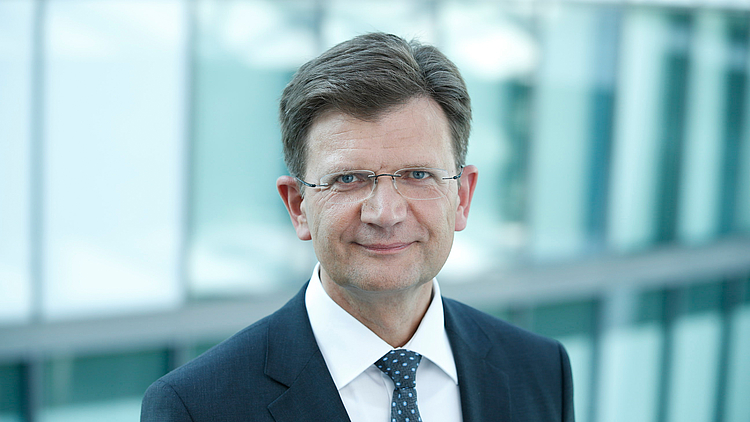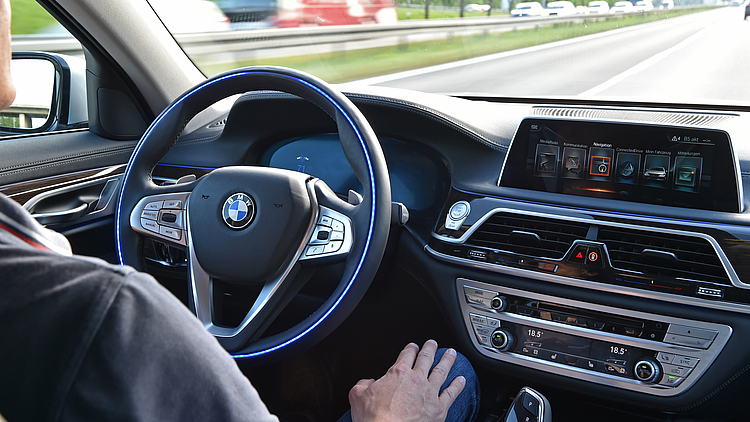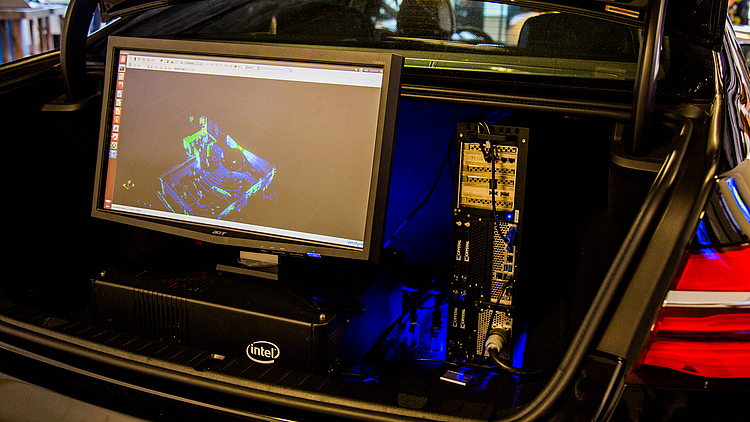BMW's Driverless Cars: A Quantum Leap to Level 5

The countdown to the mass production of autonomous cars has begun "“ much sooner than most experts expected. Klaus Fröhlich, Member of the Board of Management of BMW AG, Development, outlines his strategy.
It is still too early to write a history of automated driving, yet a number of inter-connected developments are beginning to emerge. Ten years ago, for example, a small start-up from Israel shot to fame when BMW presented the first "vehicle that can see": a BMW 5 Series limousine with Mobileye cameras and photo recognition software. Today, this expert in camera-based environmental recognition is working with all the leading car manufacturers "“ and has just become part of the Intel Corporation: "In a form of reversed integration, we've put all our automated driving activities in the hands of Mobileye boss Amnon Shashua," explains CEO of Intel Brian Krzanich.
Despite now being in the same boat, supertanker Intel is giving smaller and speedier Mobileye plenty of room to maneuver. In order to push the project forward as quickly as possible, Shashua is largely free to make decisions, emphasizes Krzanich. Know-how, financial power and speed are required in equal measure. "If approaching this process step by step, it would have taken about 20 years to get from Level 2 to Level 5," says BMW's Head of Development Klaus Fröhlich. However, now the upgrade of cars to driverless supercomputers is expected to happen in one revolutionary fell swoop. "We defined the technical system by bringing Mobileye, Intel and BMW together. This took 9 months," says Fröhlich, "but now that the system is robust, we're looking for partners."
Driverless Cars: The Industry is Partnering
In addition to Continental and Delphi, Fröhlich has now secured Magna as another Tier 1 supplier for the non-exclusive cooperation: "Three suppliers are sufficient for now, otherwise it will be too complex at some point. And we are assuming that the partnering with other car manufacturers has only just begun." Such a global network is important he says given that autonomous driving regulation will be in constant interplay with the progress of technical systems over the next 20 years. "At some point, all vehicles will use the same driverless technology. That's why we don't think it makes sense to try to differentiate in the long term."
Klaus Fröhlich is Member of the Board of Management of BMW AG, Development. (Photo: BMW)
Nevertheless, Munich-based companies want to get ahead and shape standards as far as possible. According to Fröhlich, BMW will have made a high single-digit billion investment for the first generation of technology by 2021. "Not everyone will be able to afford that. Nor does everyone have in-house expertise. Therefore, car manufacturers will have to enter into a cooperation at some point," he predicts. Fröhlich speaks of a "deadline for development contributions" at the end of this year, given that the existing cooperation is already setting up test fleets: "We are jumping to Level 5 and will be equipping 40 BMW 7 Series this year," says Fröhlich. In his opinion, this fleet of very expensive test vehicles is not yet large enough; therefore the network will be expanded by additional strategic partners.
Fiat Chrysler to Cooperate with BMW
FiatChrysler is the first associated car manufacturer, but Fröhlich is sure that more will follow by the end of the year. "If we want to be ready by 2021, then 2018 will already be too late for new partnerships. In order to complete the system, all tasks need to be completely assigned." It is important to achieve geographic diversity, he explains: "We want to have a Chinese partner, an American partner and a European partner." All those that come knocking at the door from 2018 can use the finished system as an industrialization partner. "Every partner adds value. For example, FiatChrysler will operate fleets in the USA," explains Fröhlich, "even software development will be outsourced, which is also an area where FiatChrysler could get involved."
Hands off: BMW is testing all levels of automated driving. (Photo: BMW)
This division of labor and parallel development is essential to stick to the ambitious time plan. The goal is to provide autonomous driving technology in a modular kit from Level 3 to Level 5. This will allow the appropriate system to be delivered based on the legislation in the respective country. The broad technical scope along with the simultaneous basic research presents a massive undertaking. "It's not like you can just go and get the finished parts from a drawer," explains Fröhlich. At the new development center in Unterschleißheim, Bavaria, 2000 BMW experts are responsible for motion control and system integration of robot cars. Together with Mobileye, they are also working on sensor fusion, in other words, environment models "“ "the heart of an autonomous vehicle."
Computer Power: The Crucial Factor for Level 5
For Fröhlich, the earliest date by which the technology will be capable of Level 5 automation is 2021. If only to introduce large computers with low energy consumption into cars. "Computing power is currently the main problem. Intel has yet to develop two generations of chips before we get to the point where several mainframe computers will fit into a car," says Klaus Fröhlich. The 40 BMW 7 Series are currently driving around with a trunk full of computers. At present, the test vehicles process data from 33 sensors. However, particularly in the case of LIDAR scanners, considerable development work is still necessary to reduce costs.
Size matters: currently computers still fill out the whole trunk. (Photo: Intel)
When it comes to imagining driving without human intervention, Fröhlich provides two examples: "When I go shopping, I'd like to get out of the car right in front of a department store. The car could then go and find a parking space itself." Of course, this automated chauffeur service doesn't come without challenges: The car would have to estimate where every pedestrian on the roadside might walk. This is less of an issue on highways without any pedestrians nearby or any oncoming traffic he says: "Driving 600 kilometers in traffic on a Friday afternoon is never pleasant. I'd like to be able to just push a button and let the car drive. Mind you, that requires Level 4."
Upon request, the BMW technology boss is able to imagine another development partnership for next year: "With someone who takes on a sub-task. Let's say perhaps a downgraded version of a robot taxi for metropolitan areas." When it comes to autonomous cars for cities, nobody has more experience than Google/Waymo. Interestingly, it is FiatChrysler, of all companies, that has already built 100 autonomous Chrysler Pacifica vans together with Waymo. It could just be coincidence, but Brian Krzanich has also just announced a closer development partnership with Waymo. Intel will provide the technology needed to bring robotic cars to inner cities. This is something that all players in the open cooperation will benefit from "“ directly or indirectly.
BMW's Driverless Cars: A Quantum Leap to Level 5
Modified on Tuesday 13th February 2018
Find all articles related to:
BMW's Driverless Cars: A Quantum Leap to Level 5



 Add to my Reading List
Add to my Reading List Remove from my Reading List
Remove from my Reading List






























